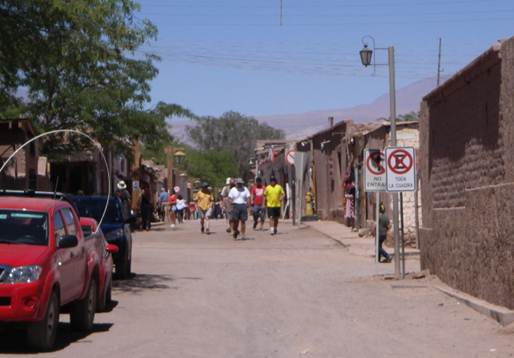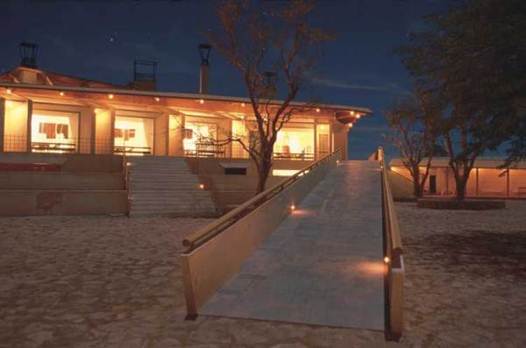Chile
The Atacama Desert in Chile is not just the
driest place on Earth, but one of the very best places from which to observe
the night sky. And it is a very promising location to watch the Southern Delta
Aquarids meteor shower, expected in late July/early August this year.
Negligible rainfall tends to correlate with the absence of cloud cover, and the
desert’s generally inhospitable conditions mean it is scarcely populated, so
there is scant light pollution. No wonder then that the European Southern
Observatory (ESO), the world’s most advanced visible-light astronomical centre,
is located here, at Cerro Paranal, 75 miles south of Antofagasta. It is home to
the Very Large Telescope (VLT), which is actually four telescopes with mirrors
27ft wide.

The
Atacama Desert in Chile is not just the driest place on Earth, but one of the
very best places from which to observe the night sky
Tantalizingly, the ESO has a hotel, The
Residencia, familiar to anyone who saw the most recent James Bond film, Quantum
of Solace (in which it was villain Dominic Greene’s home). Designed by the
Munich-based practice Auer+Weber, it’s a startlingly contemporary, partly
subterranean L-shaped structure containing 108 rooms over four levels. It also
has a 115ft geodesic dome, which spans a luxuriant indoor, garden and swimming
pool. But, disappointingly, only professional astronomers and scientists can
stay here, although there are guided tours for visitors of the Paranal
Observatory, twice a day every Saturday (for details go to www.eso.org/public/about-eso/visitors/paranal.html
or email [email protected]).
About 150 miles north-east of Antofagasta,
however, lies the small oasis town of San Pedro de Atacama, near where the ESO
will open the world’s largest radio astronomy observatory in 2013, on the
Chajnantor plain. San Pedro is also the location of the Explora Hotel de
Larache. This 42-acre estate has 50 understated but comfortable rooms, four
interconnected swimming pools, a small spa and a rate that includes three meals
a day (with drinks) and activities from trekking, mountain-biking and
horse-riding to four-wheel-drive excursions. Better yet, the hotel has its own
16ft-wide domed observatory neat the central lodge buildings. Its principal
telescope is a Meade 16in f/10 LX200R Advanced RD, with a 15in-diameter primary
mirror.

the
small oasis town of San Pedro de Atacama
Alternatively, you could stay nearby at
Casa Atacama, a development of 25 stylish, environmentally considered rooms,
and combine it with a couple of nights at Adventur-Camp, aka Swimmers in the
Desert, in the depths of the Atacama. It is a moveable camp of 10 comparatively
luxurious, heated canvas tents pitched on either side of a large bonfire (at
night the temperature can plummet to -15°C in winter and the year-round average
is -2°C), beneath a spectacularly starry sky. The glow of the fire aside, the
light pollution is virtually non-existent out here, so the heavens shine
brighter than almost anywhere else.

the
light pollution is virtually non-existent out here, so the heavens shine
brighter than almost anywhere else
You will have to bring your own telescope,
however. In which case consider investing in a hand-held Celestron SkyScout
Personal Planetarium (about $360). Point it at a star, constellation, planet or
galaxy, press “target” and it will identify what you are looking at. It only
works with the 6,000 or so stars that are visible to the naked eye. So for powerful
magnification, consider a Meade 6in ETX-LS ACF telescope (about $1,905), which
enlarges your view of the heavens and can locate whatever it is you want to
gaze at.
Three nights at Explora Hotel de Larache
cost from US$1,980 per person all-inclusive, based on two sharing; www.explora.com. Doubles at Casa Atanama from
US$379; www.casaatacama.cl/en. two
nights at Adventur-Camp cost from US$1,917 per person all-inclusive, based on
two sharing; www.adventurcamp.com/en

Explora
Hotel de Larache